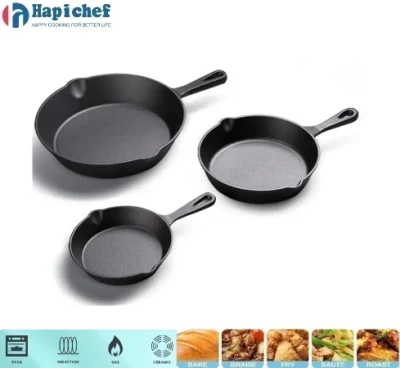A Complete Guide to Sanding and Caring for Your Cast Iron Pan
The Art of Sanding Cast Iron Pans A Guide to Restoring Your Cookware
Cast iron pans have been the cornerstone of cooking for centuries, treasured for their durability, heat retention, and the unique flavor they impart to food. However, like any cherished item, they require care and maintenance to preserve their beauty and functionality. One important aspect of this maintenance is sanding, which can help restore the surface of a cast iron pan. In this article, we'll explore the benefits of sanding cast iron pans, the tools you'll need, and the step-by-step process to ensure your cookware remains a beloved kitchen companion.
Understanding the Importance of Sanding
Over time, cast iron pans can develop rust, lose their seasoning, or accumulate burnt-on food debris. Sanding helps to remove these imperfections by creating a smooth surface, which in turn enhances the pan's ability to handle heat and allows for even seasoning application. Unlike modern non-stick pans that can be easily damaged, cast iron pans become more versatile with use—especially when they are well-maintained.
Tools You Will Need
Before you embark on your sanding journey, it is crucial to gather the right tools, as they will ensure the process is effective and safe
1. Sandpaper Use a variety of grits, starting from coarse (60-80 grit) to medium (120-220 grit) and finishing with fine (320-400 grit). The varying grits will help you progressively smooth the surface of the pan. 2. Sanding Block or Orbital Sander A sanding block provides better control for manual sanding, while an orbital sander speeds up the process. For beginners, using a sanding block can be more manageable.
3. Protective Gear Safety goggles, a dust mask, and gloves are essential. Sanding can create dust and particles that are not safe to breathe in or get in your eyes.
4. Seasoning Oil Once you've finished sanding, you'll need a quality oil to re-season your cast iron. Oils with a high smoke point, such as flaxseed oil, grapeseed oil, or canola oil, are preferred.
5. Lint-Free Cloth This will be used to clean your pan before and after sanding and when applying oil.
The Sanding Process
Step 1 Preparation
sanding cast iron pan

Start by cleaning your pan thoroughly to remove any loose debris or grease. Use hot soapy water and a stiff brush if necessary. Dry the pan completely, as any moisture can lead to rust during the sanding process.
Step 2 Initial Sanding
Begin with the coarse grit sandpaper. Sand the surface of the pan in a circular motion, applying even pressure. Focus on areas with heavy rust or stuck-on food. Take your time with this step, as it is crucial to remove any rough patches.
Step 3 Progress to Finer Grains
Once you've achieved a smooth surface with the coarse grit, switch to medium grit sandpaper. This will help to further refine the texture. Afterward, finish with fine grit sandpaper for a polished finish. Remember to wipe off the dust with a lint-free cloth periodically to check your progress.
Step 4 Cleaning and Seasoning
After sanding, clean the pan again to remove any remaining dust. Dry it thoroughly. To re-season, apply a thin layer of your chosen oil to the entire surface, both inside and outside. Place the pan upside down in an oven preheated to 375°F (190°C) and let it bake for about an hour. This will help the oil bond to the cast iron, creating a non-stick surface.
Step 5 Maintenance and Care
Proper maintenance will prolong the life of your cast iron pans. After each use, clean your pan with hot water and a stiff brush—avoid soap unless absolutely necessary. Dry it immediately and apply a light coat of oil to maintain the seasoning.
Conclusion
Sanding a cast iron pan may seem daunting, but it's a rewarding process that can bring new life to your cookware. With the right tools and techniques, you can restore and preserve your cast iron pans for years to come. As you put your freshly sanded pan back into use, you’ll appreciate the improved cooking surface and the flavors it enhances in your meals. So grab your sandpaper and get to work; your cast iron pan is waiting for its revival!
-
Why Every Kitchen Needs a Casserole Cast Iron DishNewsJun.24,2025
-
Experience the Tradition and Quality of Cast Iron CookwareNewsJun.24,2025
-
Double Sided Cast Iron Grill PanNewsJun.24,2025
-
Cast Iron Dutch Ovens You’ll Actually UseNewsJun.24,2025
-
Buy Cast Iron Griddle for Everyday CookingNewsJun.24,2025
-
Barbecue Iron Grill Cooking PowerNewsJun.24,2025
-
Standard Product Lines from Cast Iron Cookware SuppliersNewsJun.11,2025
